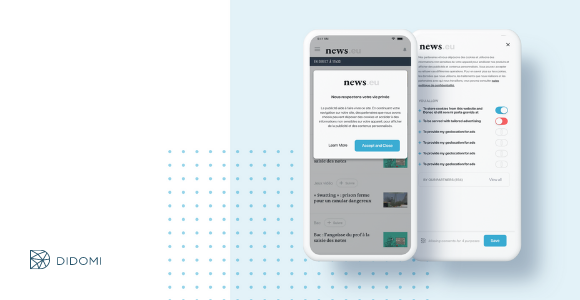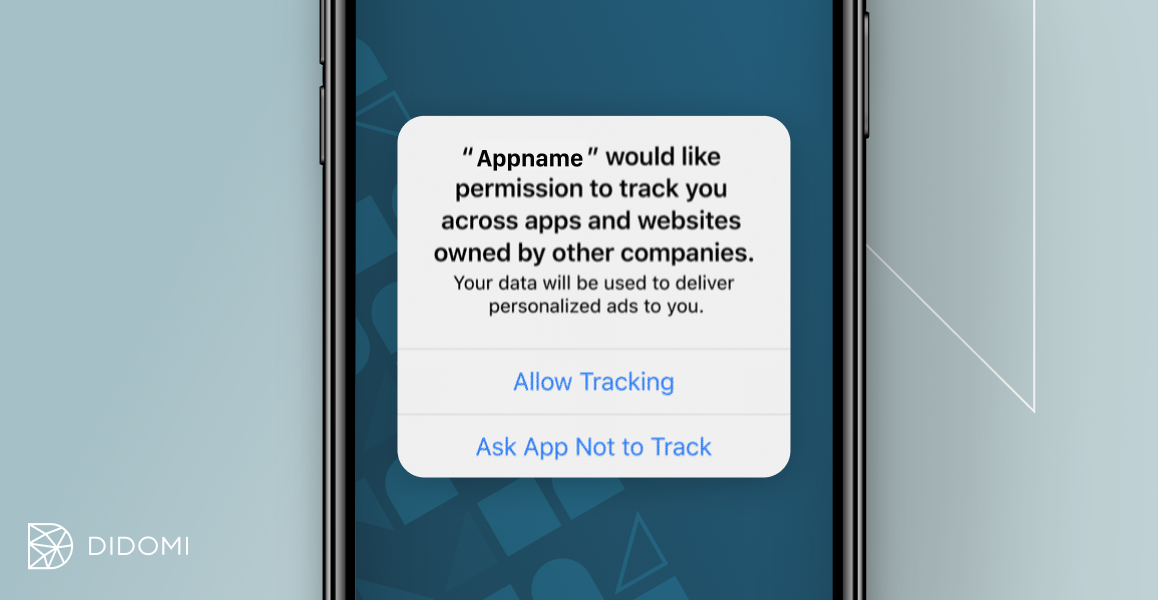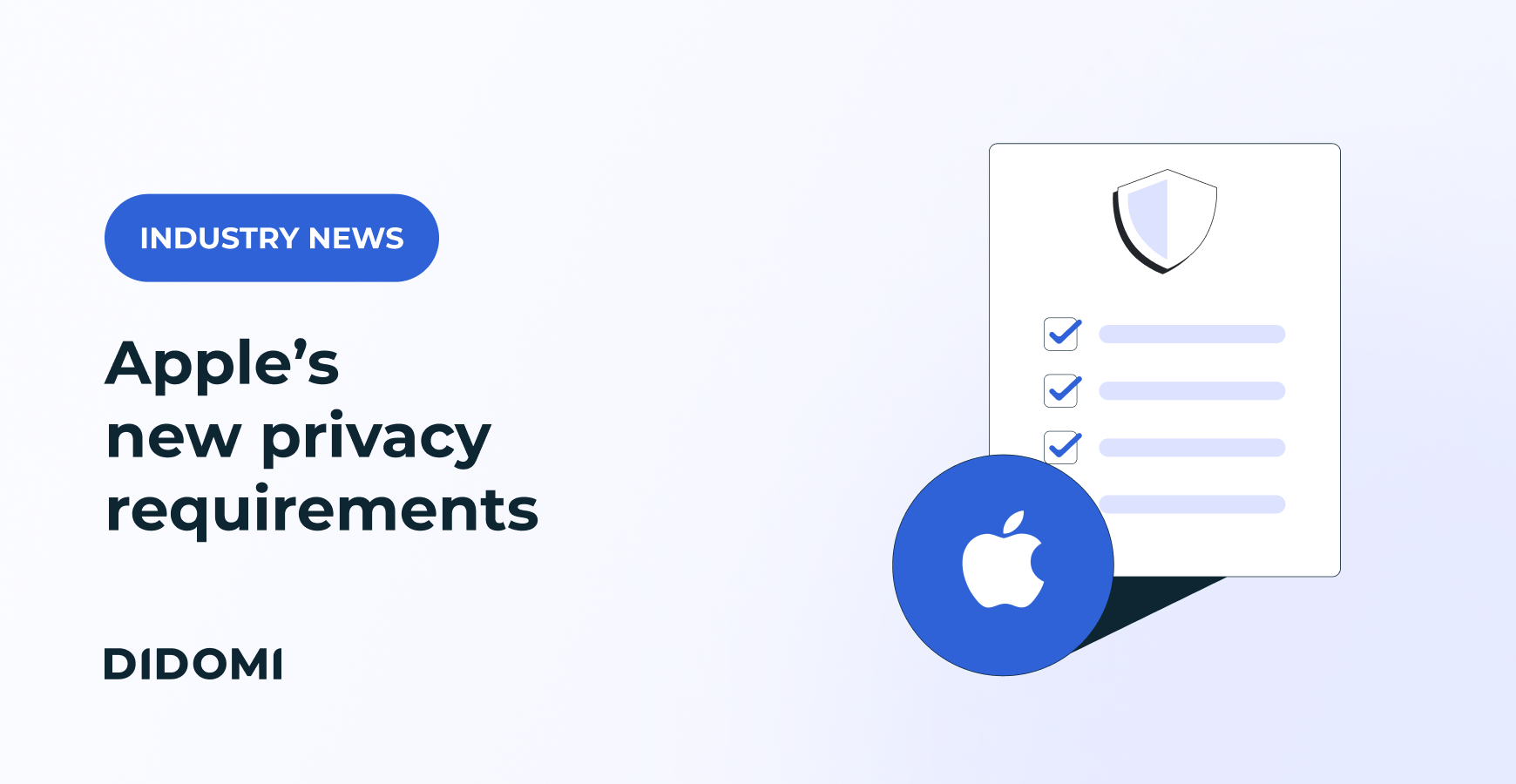Apple's announcement in June 2020 of new privacy settings for iOS 14 caused a sensation in the advertising world. Pushed back to 2021 due to industry pleas for a delay, the mobile operating system will require all applications to receive users' consent to access their data (location, browsing history, IDFA, etc.) via a pop-up message in the app. Carry on reading to find out what this means for the ad tech industry.
Summary
What are the new user privacy settings for iOS 14?
As of 2021, application developers will have to ask for users' consent to track their data via a pop-up message within the app. It is only after receiving this notification that the user can decide to accept or refuse to share their data on a per app basis.
Tracking sanitization prompt soon in all iPhone/iPads/etc. This will be a big change in privacy or tracking aspects. #GDPR #ePrivacy https://t.co/qwUKHRZ4r3 https://t.co/mPiVVdoXmD pic.twitter.com/mT25nclzcZ
— Lukasz Olejnik (@lukOlejnik) October 14, 2020
This change will specifically affect ad targeting. Retargeting, exclusion targeting, segmentation or look-alike audiences currently depend on the use of the Identifier for Advertisers (IDFA), a random device identifier assigned by Apple to a user’s device that advertisers use to track data so they can deliver customised advertising. The consent policy of iOS 14 will therefore have a significant impact on ad monetisation and user acquisition.
If you are a publisher, DPO, app developer or anyone involved in monetisation, you may be apprehensive about this news, and certainly have many questions in mind. Don't worry, Didomi is here to prepare you for the changes and help you comply with new regulations. Schedule a free demo with an expert in iOS 14 today to review what the upcoming changes mean for you and your business, and the essential role of a CMP.
What does this mean for my app?
Apple’s announcement understandably comes as shock to the industry and app developers in particular. So what does it mean for you and your users?
Prepare for a certain loss of revenue
First of all, prepare for a certain loss of income. It is hard to quantify the number of users who will opt-in - some players in the Adtech industry expect 10 to 20% opt-in rates, while others, such as our CEO Roman Gauthier, estimate that it ranges between 50 and 70% when the request is appropriate. But, in any case, there will be a ripple effect on the Adtech industry.
The IAB tech lab points out that generally, any removal of the advertising ID affects all stages of the digital marketing lifecycle and the entire business model for publishers, resulting in an average 52% decrease in advertising revenue. To avoid significant decreases in revenue, you need to prepare for a strong opt-in strategy and total compliance. If there are publishers amongst you who depend on advertising, Didomi can help you maintain the highest opt-in rates as possible while remaining compliant and protecting user privacy.
You must be compliant with iOS 14 AND the Transparency and Consent Framework
Second, because Apple applies a proprietary approach to user privacy, as opposed to open standards such as the Transparency Consent Framework (TCF), their new features may come into conflict with existing standards for advertising and data transparency and control. This is why the IAB regrets that Apple has chosen to stand alone and believes that their proprietary privacy features lead to more fragmented and less predictable privacy and data protection for users.
In any event, you should be aware that Apple's new consent notices do not replace those already in place with your CMP. We will come back to this point later.
Users may experience consent fatigue
The multiplication of consent notices can have a negative impact on user experience and lead to “consent fatigue”. Indeed, thanks to their CMPs, many Apple application publishers already offer users clear and standardised options to help companies involved in advertising transactions to comply with different regional laws. Now, users could be presented with both Apple's pop-up window and a publisher's TCF-based user interface. They may find this cumbersome, so you will need to work hard to provide them with the smoothest possible UX.
For all these reasons, the advent of iOS 14 reinforces more than ever the need to be assisted by a CMP like Didomi’s.
Why do I need a CMP?
Apple's announcement complicates the implementation of the various consent requests necessary to comply with the law, and requires expertise in user interface and user experience to create a relationship of trust with your users.
Feeling overwhelmed by what yet another privacy hurdle might mean for your business? Here are our top tips...
CMPs help secure compliance
For the moment, the Didomi SDK does not ask users for permission to track, so it is the responsibility of the application to do so. You must follow Apple's guidelines regarding the disclosure of data collected by your application and the request for tracking permission to the user. However, application owners still need to gather user consent in the application and therefore still require a CMP.
Apple's AppTrackingTransparency framework does not ensure compliance with the Californian Consumer Privacy Act (CCPA) or the General Data Protection Regulations (GDPR) in Europe. While Apple's consent notice and CMPs address similar themes regarding data privacy and user choice, they tackle very different aspects of this issue. Apple's consent notice focuses on tracking, location, camera use and IDFA. CMPs manage purposes, data sharing options, partners who can access your data, and cookies, for example.
In order to ensure compliance, you must have both the Apple notice AND a CMP. Didomi will give you the assurance that you are collecting as much data as legally possible, and monetizing it anywhere, anytime in a compliant manner.
CMPs help secure user consent
Didomi gives personalised advice on how to continue to legally monetise user data in order to get people to opt-in. We help you define a strategy for when, where and how you obtain consent from your users: having a clear idea of where in the user flow you want to seek consent; how to elicit a positive response to the request; when to communicate the value of consent; and testing your UX approach to ensure it works with your users and their specific needs.
CMPs help build user trust through transparency
The biggest challenge concerning iOS 14’s new privacy settings is to ensure that the CMP and iOS consent notices work together seamlessly. The objective is to provide users with transparent information and clear choices so that they can give their consent with confidence in an application environment they trust and feel secure. This requires skill and technique.
What are the next steps?
The advent of iOS 14 does not mark the end of monetisation for you, but simply the need to align your consent request methods with these new measures, and to prepare for a certain amount of change. In this constantly evolving industry, it seems like this will not be the last time you will have to adapt to new policies of large companies, states or regions.
Didomi helps you to monetise legally and ensure transparency with your users in order to collect as much consent as possible, and stay ahead of the game!







-png.png?width=850&name=Blog%20-%20Featured%20image%20(1)-png.png)




